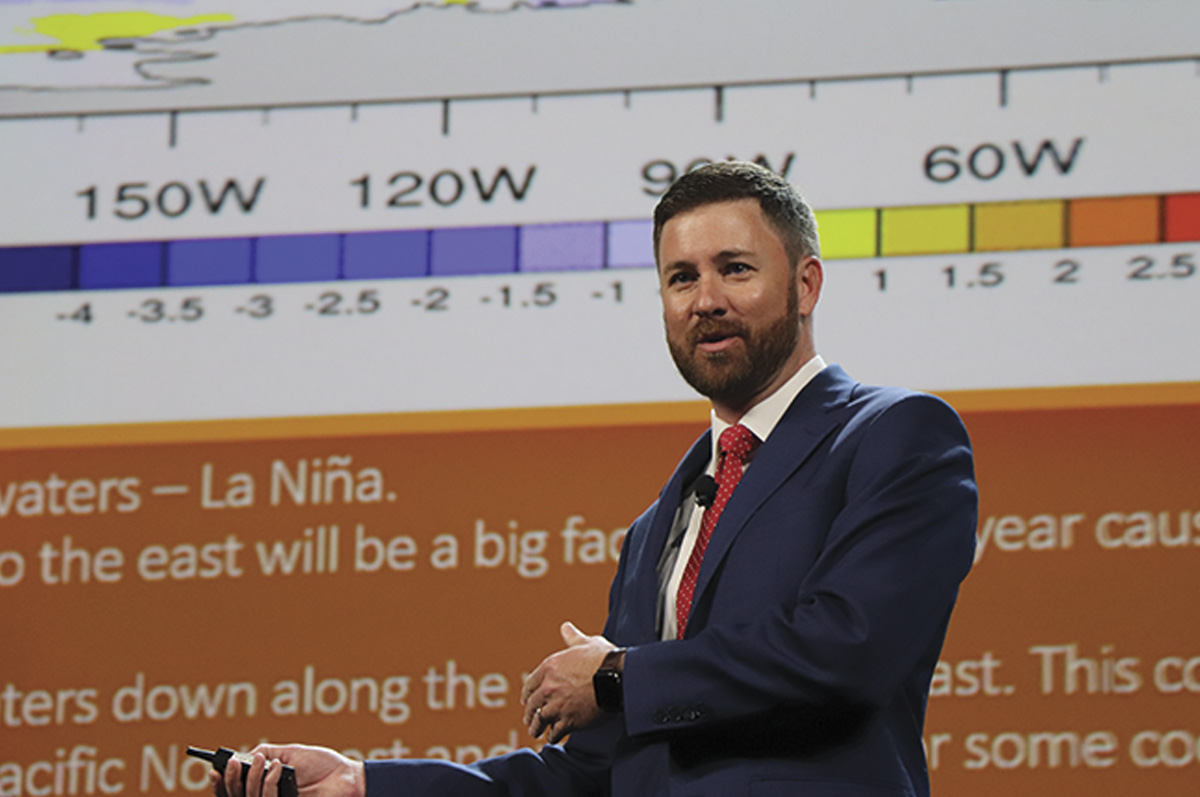Segment leverage
The debate over recent years has been why so much leverage on cattle price has swung heavily to packers and away from cow-calf producers at a time when boxed cutout values are consistently above $250.
So how, Good asked, does leverage improve over time?
Declining supplies over the next four years will favor cow-calf ranchers, aided in part by more shackle space coming from packer expansion. The third component is “packer participation.”
“Just common sense to packers bidding is that two packers bidding is better than one; three packers bidding is better than two; four packers bidding is better than three. And that’s the simplest way of looking at it. The sooner we see better participation, the sooner we get the front-end supply to a spot where we have that participation, obviously, leverage swings much quicker.”
The rate of packer expansion will start in 2022 with a conservative estimate of an additional slaughter capacity of 2,500 head per day. Between 2023 and 2025, an additional 4,000 head increase is the conservative estimate. But the operative factor, Good added, will be labor availability heading into the next three years.
“We can build brick and mortar, but we’ve got to have somebody to work the plants.”
 Matt Makens
Matt Makens
Weather outlook
Makens gave producers hope that after two years of La Nina weather patterns, a neutral year is hopefully on the horizon.
Makens said La Nina conditions will persist through the spring, but that there is a possibility of change during the summer months. “Very rarely has La Nina shown up for three seasons … I’m not saying that La Nina may not be with us next year, but I am saying that, historically, it is rare for a three-peat of La Nina.”
This year, as in most dry years, the timing of precipitation will be critical, especially in the Corn Belt. The forecast predicts a monsoon season for northern Mexico and into the Southwest, which has bad implications for the Corn Belt. “In May, we’ll have a very strong indication of how strong the monsoon will be. The stronger the monsoon, the drier the Corn Belt; the weaker the monsoon, the better off for the Corn Belt.”
Most forecasts are currently indicating a neutral year following the finish of the current La Nina weather pattern, but what happens around the world in the next few months is a more accurate indication of whether or not La Nina comes back. “We have to get through March; we have to see what is going to happen in eastern Brazil; we have to see what’s going to happen over the Easter Islands; we have to see what’s going to happen in New Zealand. Those things over the next seven weeks are indicators for what’s going to happen next year.”






